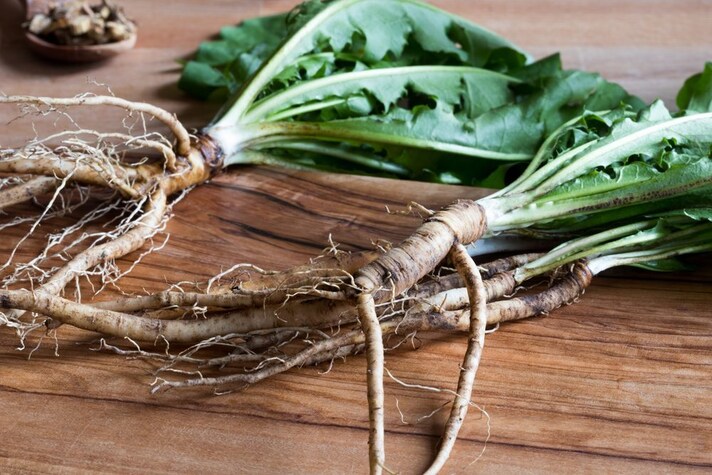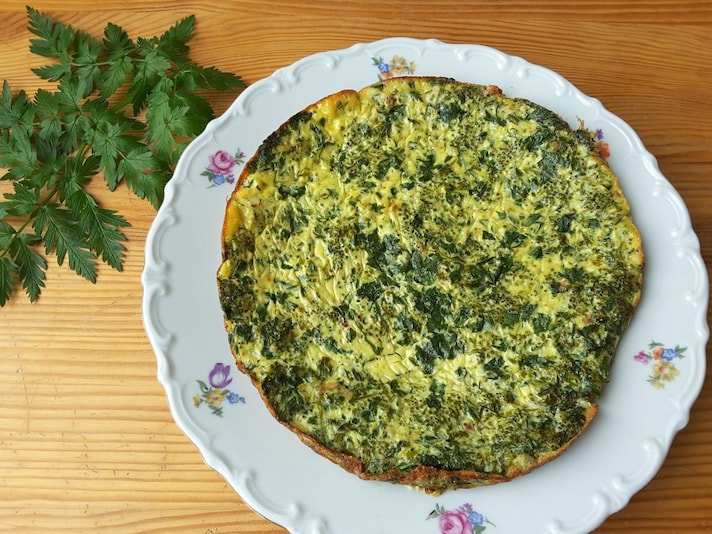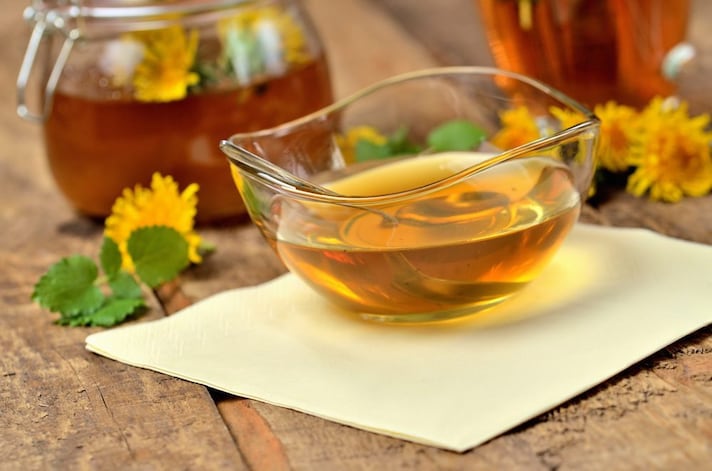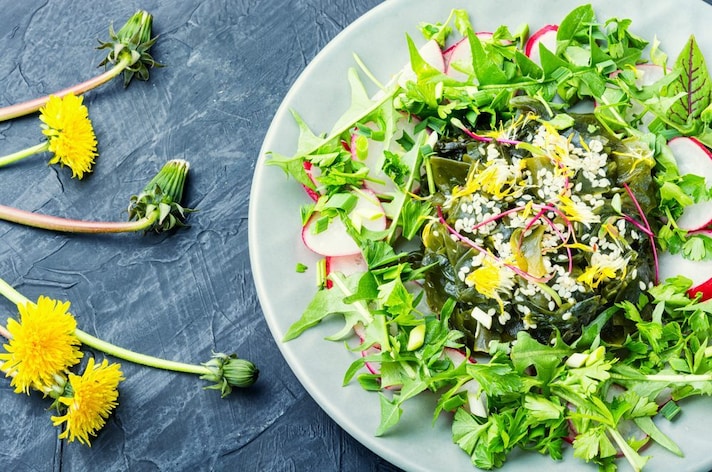Can You Eat Dandelions? Yes! Here’s How to Use Them in The Kitchen!
Used since the Middle Ages for its purifying properties, dandelion is a medicinal plant widely used in cooking. Let's discover its properties and uses in cooking.
;Resize,width=742;)
Have you ever let the seeds of a dandelion fly, that soft white flower that once in the air turns into many little parachutes? Did you know that that little ball of fluff comes from the dandelion? This plant, which is easily found in meadows and along the roads, has many other names. And surely you too have picked one and, blowing on it, made a wish. But the dandelion is not just a game for children: it is also a tasty food and a natural remedy. Let's see together how to exploit its beneficial properties and its uses in the kitchen.
Dandelion's Characteristics
Dandelion is a herbaceous plant, widespread in almost all countries with temperate climates, which grows spontaneously in meadows and on the edges of roads. As we said, it is also known as blowball or pissball, due to its diuretic properties, and is characterized by its hollow and milky stem, its lobed and toothed leaves and its golden-yellow flower that turns into a fluffy sphere after flowering, the classic "blowball".

Dandelion is a plant with a thousand virtues, which can be used both as a natural remedy and as a food. Thanks to its diuretic, digestive, purifying, anti-inflammatory and antioxidant properties, it can help prevent and treat various disorders and improve general well-being. However, like any medicinal plant, it should be used in moderation and with attention to possible allergies, interactions and contraindications.
Dandelion's Properties: a Liver-Friendly Plant
Dandelion is best known for its medicinal properties, known since ancient times. In traditional Chinese medicine, for example, it has been used for centuries to improve digestion, reduce inflammation and promote diuresis. Even the ancient Romans and Greeks used it as a natural remedy for various pathologies, such as digestive disorders, fever and inflammation.
Its scientific name comes from the Greek taraxakos, which means “remedy against disturbance”. In fact, this plant has beneficial effects on various organs and functions of our body, thanks to its bioactive substances and its active ingredients variously distributed between roots and leaves. And in particular its properties are:
- Depurative: Dandelion helps purify the liver and eliminate harmful substances from the blood. It can be useful in cases of poisoning, hepatitis, cirrhosis and acne.
- Diuretic: stimulates the production of urine and promotes the elimination of excess fluids and toxins. Excellent for those suffering from water retention, edema, hypertension and kidney stones.
- Digestive: aids digestion by increasing the secretion of the digestive glands and stimulating the production of saliva and gastric and pancreatic juices.
- Choleretic and cholagogue: promotes the production of bile by the liver and its flow towards the intestine. Effective in cases of liver failure, cholecystitis, gallstones and high cholesterol.
- Anti-inflammatory: dandelion has a mildly anti-inflammatory effect on the digestive and urinary mucosa. It is therefore a valid aid in cases of gastritis, cystitis, prostatitis and rheumatism.

Dandelions' Contraindications
Dandelion is generally well tolerated, but may have some contraindications:
- Allergy : May cause allergic reactions in people sensitive to plants of the Asteraceae family, such as chamomile, arnica or ragweed. Symptoms may include skin rashes, hives, itching, swelling or difficulty breathing.
- Drug interactions: Dandelion can interfere with some medications, such as anticoagulants, diuretics, or hypoglycemics. In these cases, it is advisable to consult your doctor before taking dandelion.
- Pregnancy and breastfeeding: There are not enough studies on the safety of dandelion during pregnancy and breastfeeding. As a precaution, it is best to avoid its use in these conditions.
How to Use Dandelions in The Kitchen
Dandelion is a plant that is easily found in nature, but if you do not have the possibility of collecting it directly from the surrounding environment, you can buy it in some organic food stores, herbalists or pharmacies.
When purchasing, make sure you choose quality products, preferably organic and free from chemicals or additives.
Like many edible flowers, you can eat the buds, but also the leaves and roots. Let's see how to use them in the kitchen.
1. The Leaves

Dandelion leaves are the main ingredient of spring salads and some regional recipes. They have a bitter taste and are rich in vitamins and mineral salts. They are preferably collected before flowering, when they are more tender and less bitter, and are washed well under running water. They can be eaten raw or cooked, depending on taste and preparation. An omelette with dandelion leaves is excellent.
2. The Flowers

Dandelion flowers are edible both fresh and dried. They have a sweet taste and are rich in antioxidants. They are collected when they are well opened, preferably in the morning, and are stored in a cool, dry place. They can be used to decorate savory or sweet dishes, to prepare syrups, jams, liqueurs, honey or infusions.
3. The Roots

They are preferably harvested in spring or autumn, when the plant is younger and less bitter. The largest and fleshiest roots are chosen, which are extracted from the ground with the help of a spade or a fork. They are washed well under running water, eliminating the damaged or dirty parts. They can be eaten raw or cooked, depending on taste and preparation.
A Bit of Folklore
Dandelion is present in various legends and popular beliefs, which have made it a much loved and respected plant in many cultures. For example, in some European folk traditions, blowing on dandelion seeds is considered a gesture that brings good luck and makes wishes come true. In other cultures, this plant has been used as a magical ingredient in ritual practices. For example, in some African traditions, it is used to prepare an incense that is burned to ward off evil spirits and protect the home from negativity.
Additionally, in some European folk cultures, the dandelion has been associated with fairies and magical creatures: it was believed that fairies loved the dandelion and that it could be used to attract them or gain their favor.
;Resize,width=767;)


;Resize,width=712;)
